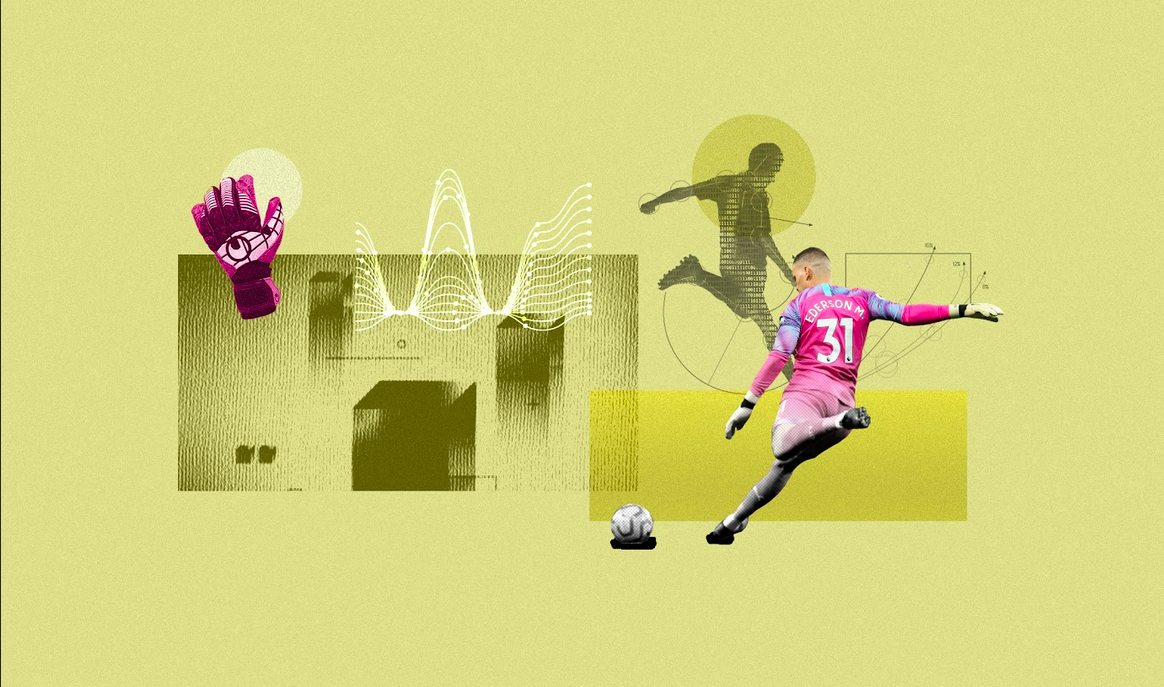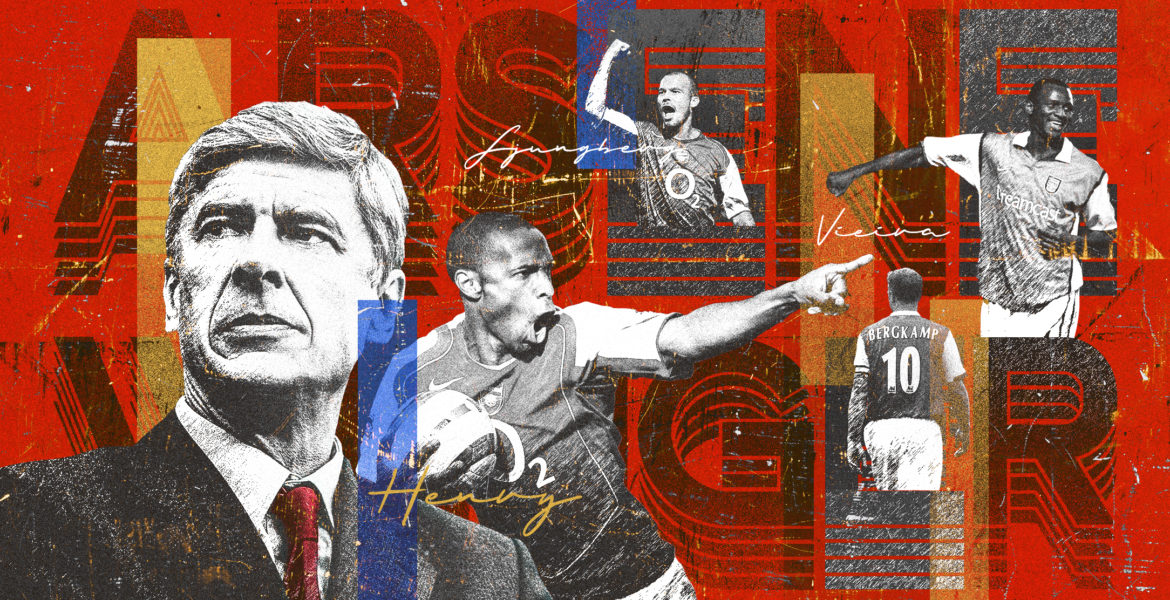Modern football is a game of numbers. Every year new ideas come to the surface to aid our human instinct of ranking and creating lists. We want to know who is the best distributor, who is the best finisher, and who wins the most challenges. Goalkeeping can be considered a frontier in performance analysis as the position has a unique challenge compared to everyone else on the pitch; nearly all goalkeeping actions are dependent on the actions of other players. There is not much control. This means the data evolution viewed goalkeeping as an after-thought for years. Nowadays, we have seen a rising interest in the field, and a number of metrics are slowly becoming mainstream.

Throughout my career, I have specialized in goalkeeping analysis. I have worked on categorizing goalkeepers to have a better understanding of each goalkeeper’s performance. These categories include the sweeper-keeper, the ball-playing goalkeeper, and the line ‘keeper. Each of these categories has strengths and weaknesses that can support or hurt a team’s tactical approach.
While discussing goalkeeper categorization and performances with a close friend who is a goalkeeping coach in the Allsvenskan, we noted how the last aspect of goalkeeping to be understood from an analytical perspective tends to be crossing. Thus, we have our final frontier of goalkeeping data.
Seeking an Understanding of Crossing
When looking at data, we have to consider the obvious. As of right now, the data is not publicly available to consider the difficulty of the cross. We can only view it as a cross exists, it happened. The data we do have can help us answer a question for both goalkeeping coaches and recruitment analysts/technical scouts; How important is the ability to collect crosses for our club? Note: All of the data referenced going forward is sourced from WyScout and Statsbomb/FB-Ref. Data was collected on January 5th with minutes played minimum of 900 in UEFA’s big five leagues.
The first piece of our crossing-related puzzle we will look at is purely crossing performance:
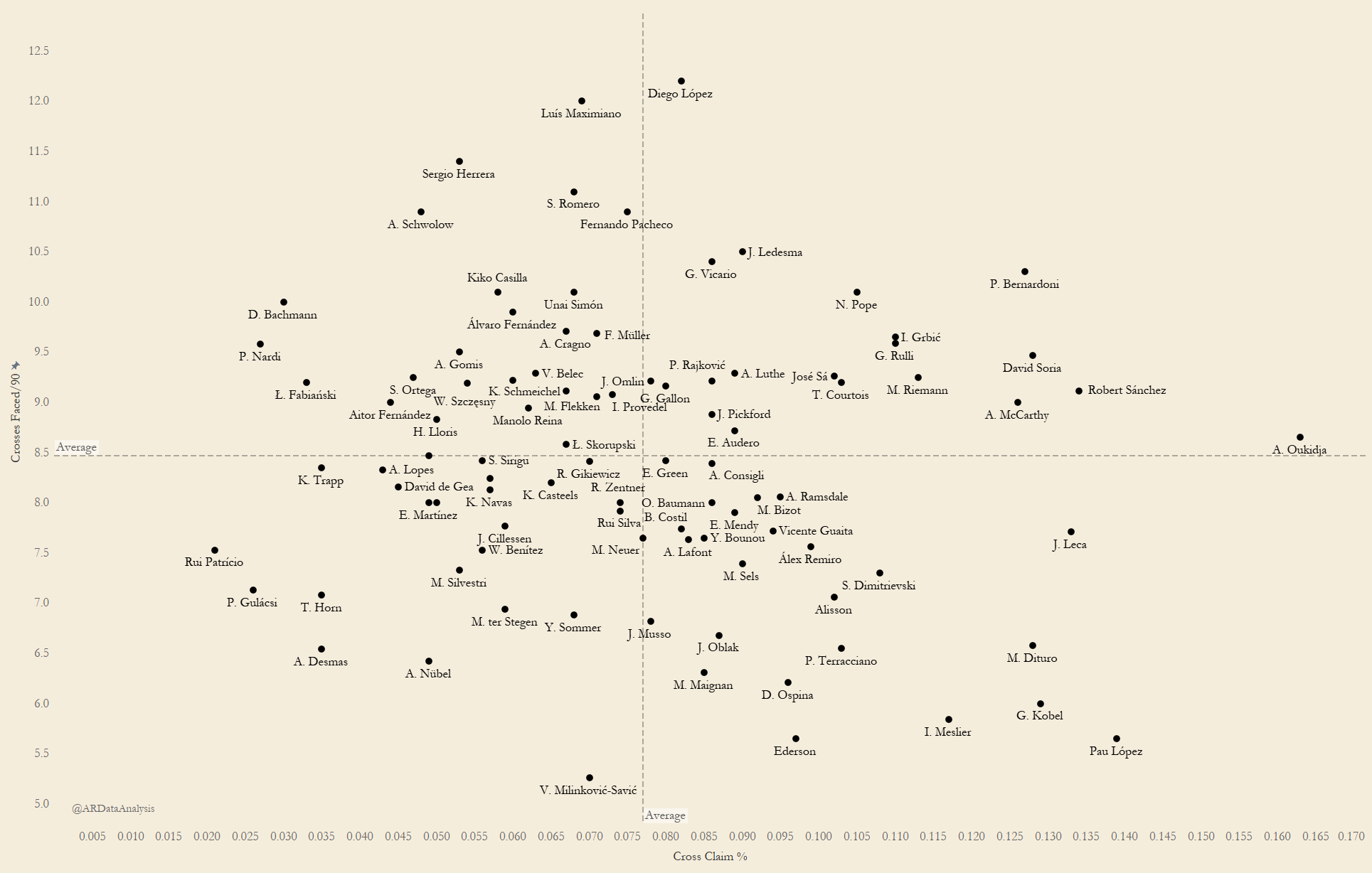
We can see that there is not an immediate correlation between the ability to collect crosses and perhaps the performance of a team. Relegation-battling Daniel Bachmann is only a slightly worse performer than European-battling Lukas Fabianski, but both are among the worst. Robert Sanchez and Alex McCarthy have very different public opinions in terms of rating/quality, but both are fairly comparable in cross-collection. We can now move on and consider more factors.
Are ball-playing goalkeepers also ideal cross-collectors?
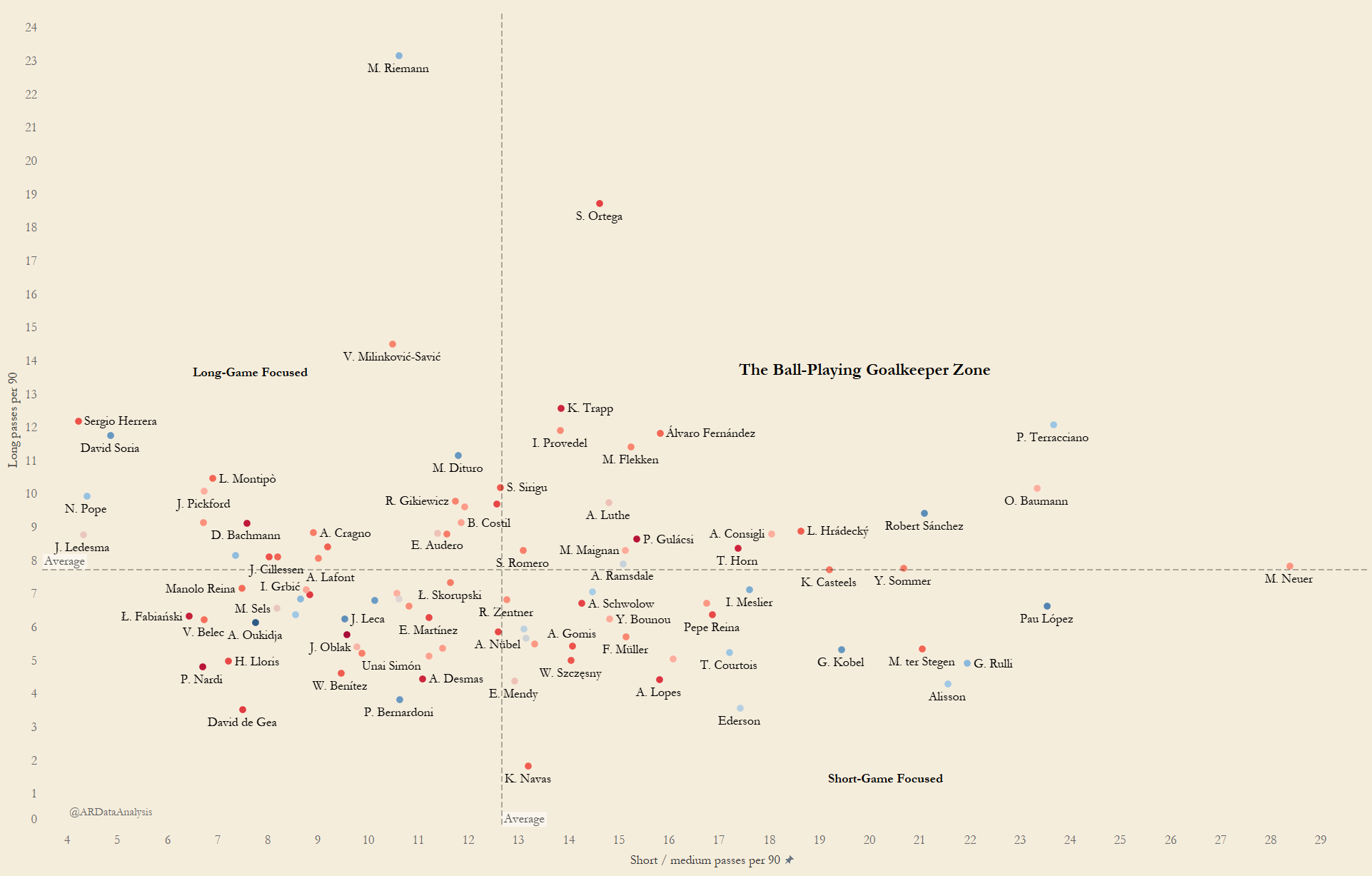
When we create a visual looking at the distribution, we can include a colour code of cross-collection percentage. Our spectrum used is red to blue, with red signifying poor performances in cross collection and blue signifying strong performances. When we look at the ball-playing goalkeeper zone, which are goalkeepers who bring a blended approach of above-average long and short distributions, we find that 3 of the 19 goalkeepers (0.16) can be considered strong in cross-collection. This initially suggests that ball-playing goalkeepers have no noteworthy relationship with the ability to collect crosses, but then we can notice the goalkeepers focused on the short game.
10 of the 24 goalkeepers (0.41) that fall into this category happen to be strong in cross-collection, which is noticeably better than any other category (0.21 for long-game focused, 0.16 for ball-playing zone, and 0.21 for those who are simply not ball-playing goalkeepers). We can take this information with us as an ideal if we want to focus on short distributions, the goalkeepers who tend to do this often happen to also be strong in cross-collection. That being said, there is not much of a relationship between distribution and cross-collection purely because we must remember distribution will always be an after-action to crossing. Nick Pope proves to be an ideal example here to verify that.
Is a Sweeper-Keeper the goalkeeper to sweep up crosses?
Going into this research, I always had the thought process of categorizing cross-collection with other aspects of the sweeper-keepers. It just made sense to me because we consider coming off the line as a sweeping action. That being said, I was always open to the argument that it should be within the line-keeper category because we define a line-keeper as someone with a strong reach and aerial ability. A cross tends to be more dependent on your ability to win in the air rather than coming off your line, so cross-collection could fit in that category as well, which fueled my curiosity and uncertainty of the crossing data that I had access to. So, let’s look at the puzzle piece for sweeper-keepers and find answers.
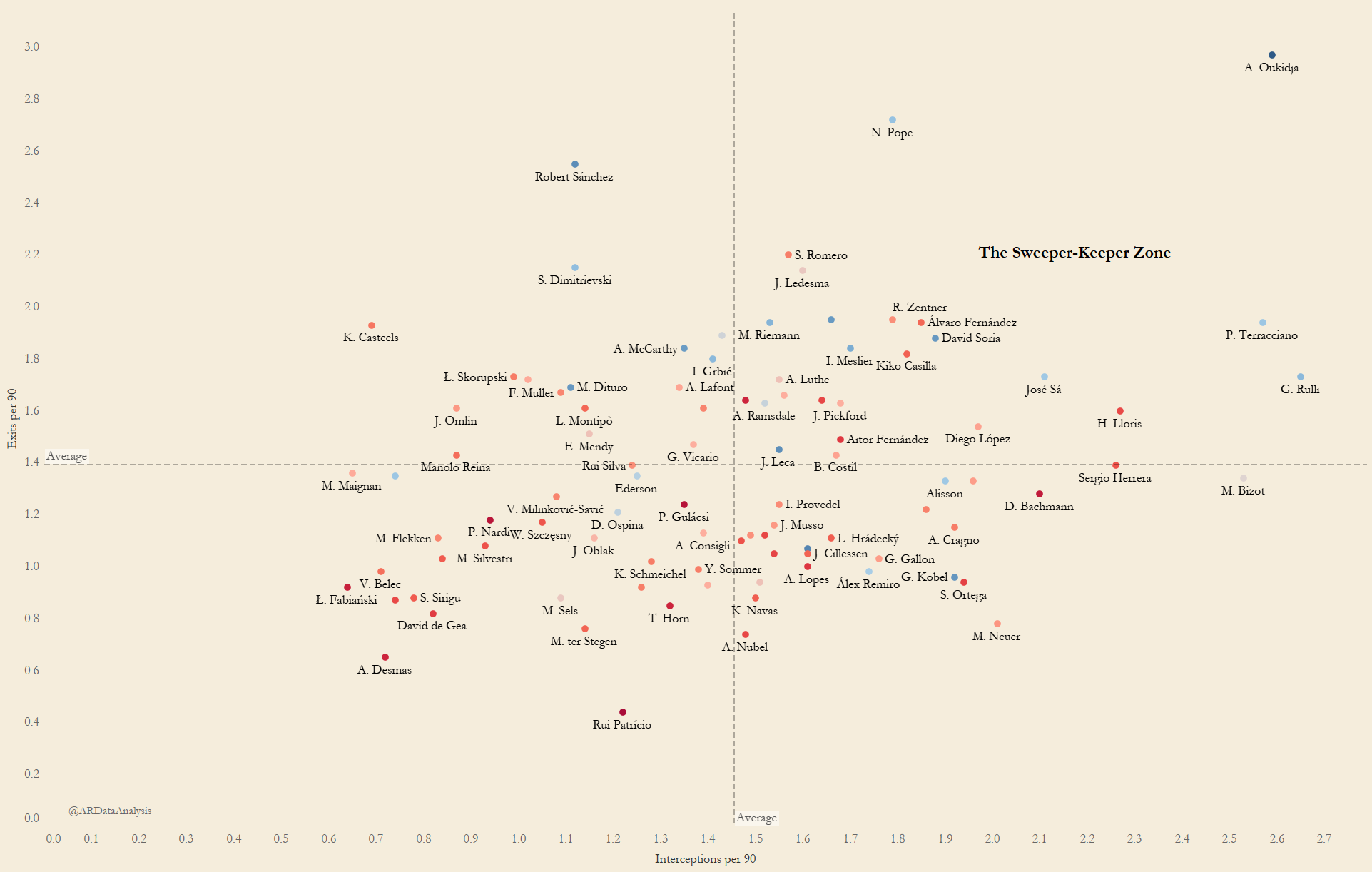
Utilizing the same coding for cross-collection as the previous visual, we can compare exits/90 with interceptions/90. At first glance, the cross-collection might look fairly sporadic or random for you. However, I suggest covering the visual in half, both vertically and horizontally. You might find that whenever you cover QIII (the bottom left), you will find more signs of blue (strong crossing performances) than red (poor crossing performances). Let’s break this down a different way to perhaps make it easier to process.
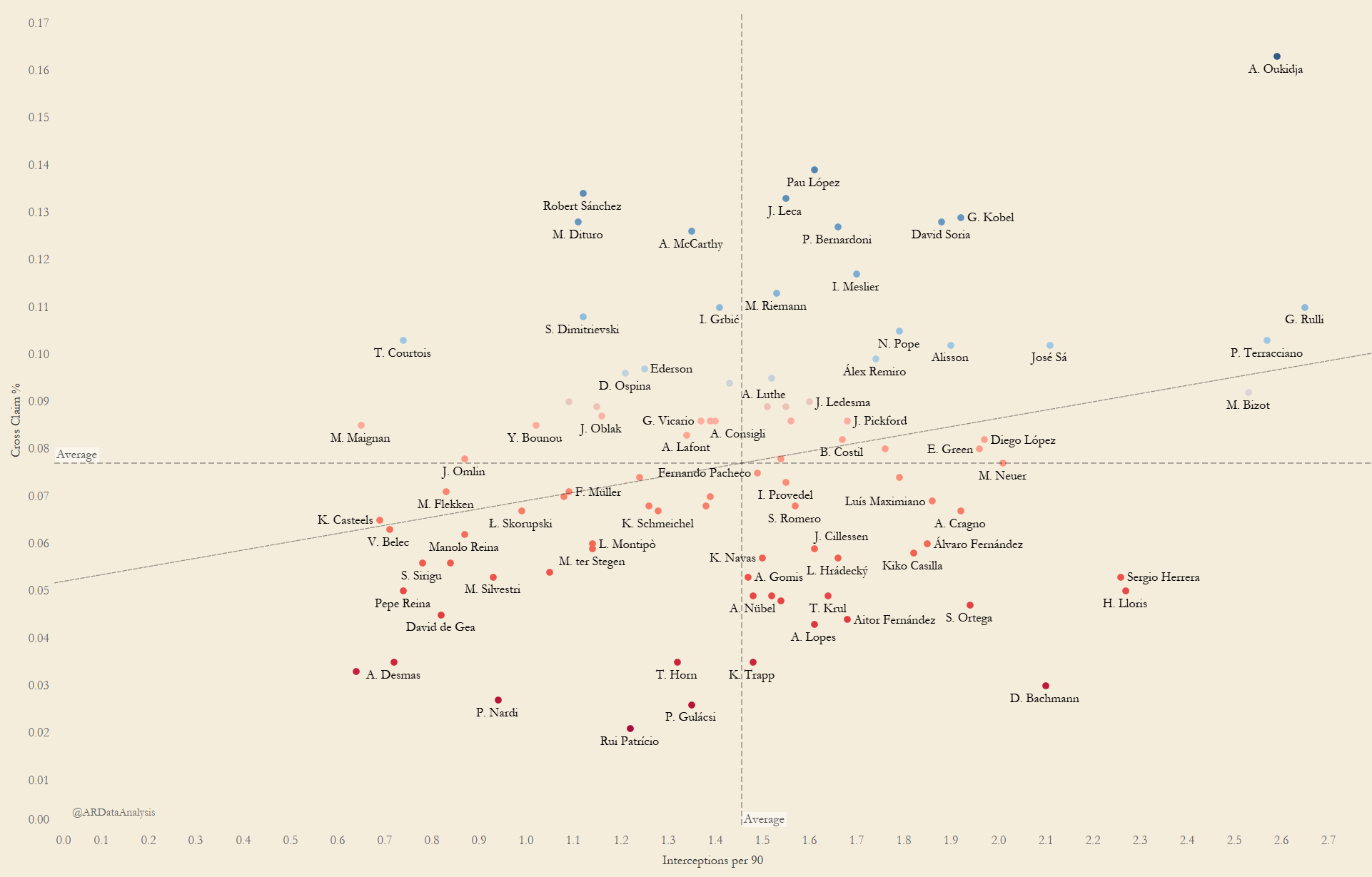
First, we will look at just exits/90 vs. cross-claim %. We can immediately see a positive trend is present. The more you are coming off your line, the chances are you will be better at collecting crosses. There is something to consider with this, however. Goalkeepers who are confident at contesting crosses will come off their line more often to contest, thus contributing to their exits/90.
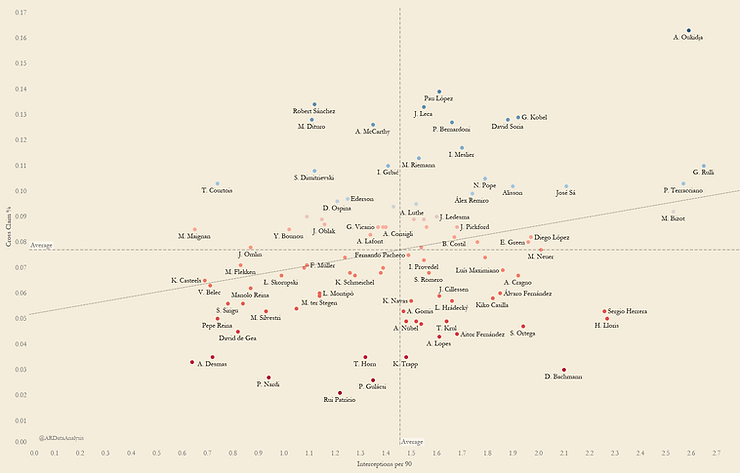
Now, what if we look at our other primary metric for sweeper-keepers: Interceptions/90. We still see a positive trend, but it is not as strong of a correlation. It is more likely that your goalkeeper will be strong at claiming crosses if they also are strong at interceptions. Given both of these metrics are very dependant on timing, it makes sense that there is a positive trend. As we finish our sweeper-keeper piece of the puzzle, we can reasonably conclude that a strong sweeper-keeper tends to also be strong in cross collection.
Does cross-collection have any correlation with goal prevention?
No matter what, a goalkeeper’s most important job is the ability to prevent goals from being scored. For the clubs who are not asking more of their goalkeepers beyond this job, this is where you get to find out if you need to consider cross-collection for your shot-stopper or if the ability just comes as an additional perk.
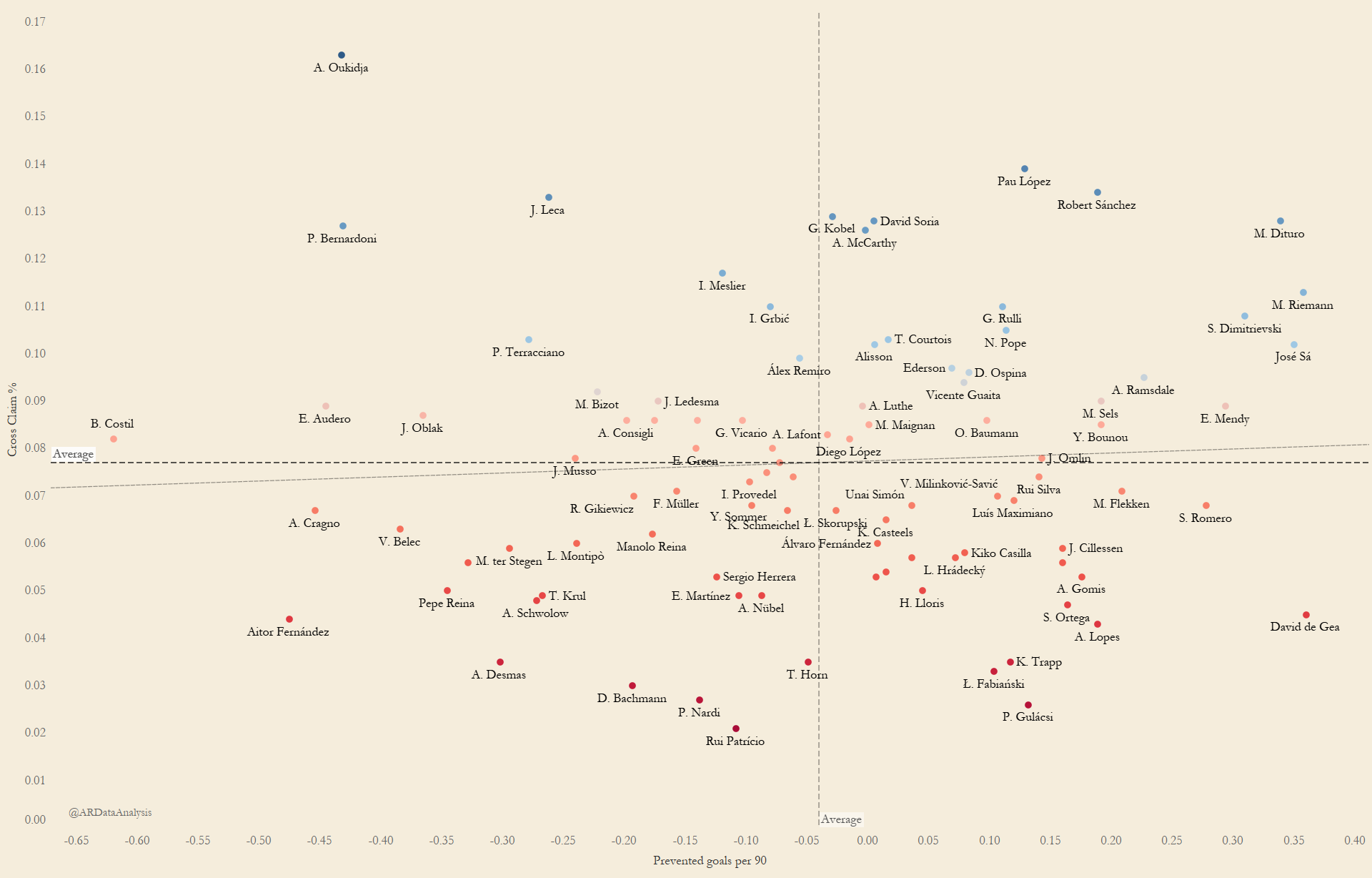
When we visualize the data, there is a slight positive correlation between goal prevention and cross prevention/collection, but the correlation is small enough that it is reasonable to conclude you do not need an elite shot-stopper to claim all of the crosses and you do not need a cross-denying maestro to keep clean sheets.
Concluding Remarks

As we explore our frontier of goalkeeping data, we have hopefully found a deeper understanding of how to consider crossing with the coaching and talent identification of goalkeepers. We have learned that the performance of cross collection has little to no involvement with goal prevention. We now know that a quirk of goalkeepers playing in a short-passing focus system happens to also be strong candidates for cross collection. Most importantly, we have learned that teams seeking sweeper-keepers need to be training cross collection as a key skill and recruitment analysts/technical scouts must be looking at how well a goalkeeper handles crosses to become ideal candidates.
The reality of all of this is crossing data is not yet perfected for goalkeeping analysis. We do not publicly have the data considering how threatening a cross may be to see who is truly handling crosses the best. In the future, models will be made considering the height, velocity, and trajectory of a cross as well as the number of players making a play on the cross. For now, we have one of the few frontiers remaining in performance analysis.
To end a positive note, I assure you I will not be switching my career focus of technical analysis to a career of shamelessly photoshopping silhouettes of goalkeepers into peaceful paintings of nature because graphic design is not my passion. I hope you enjoyed reading this and if you have any questions or just want to chat, never hesitate to reach out to my Twitter (@ARDataAnalysis). My messages are always open.
by Aidan Reagh
@ARDataAnalysis

